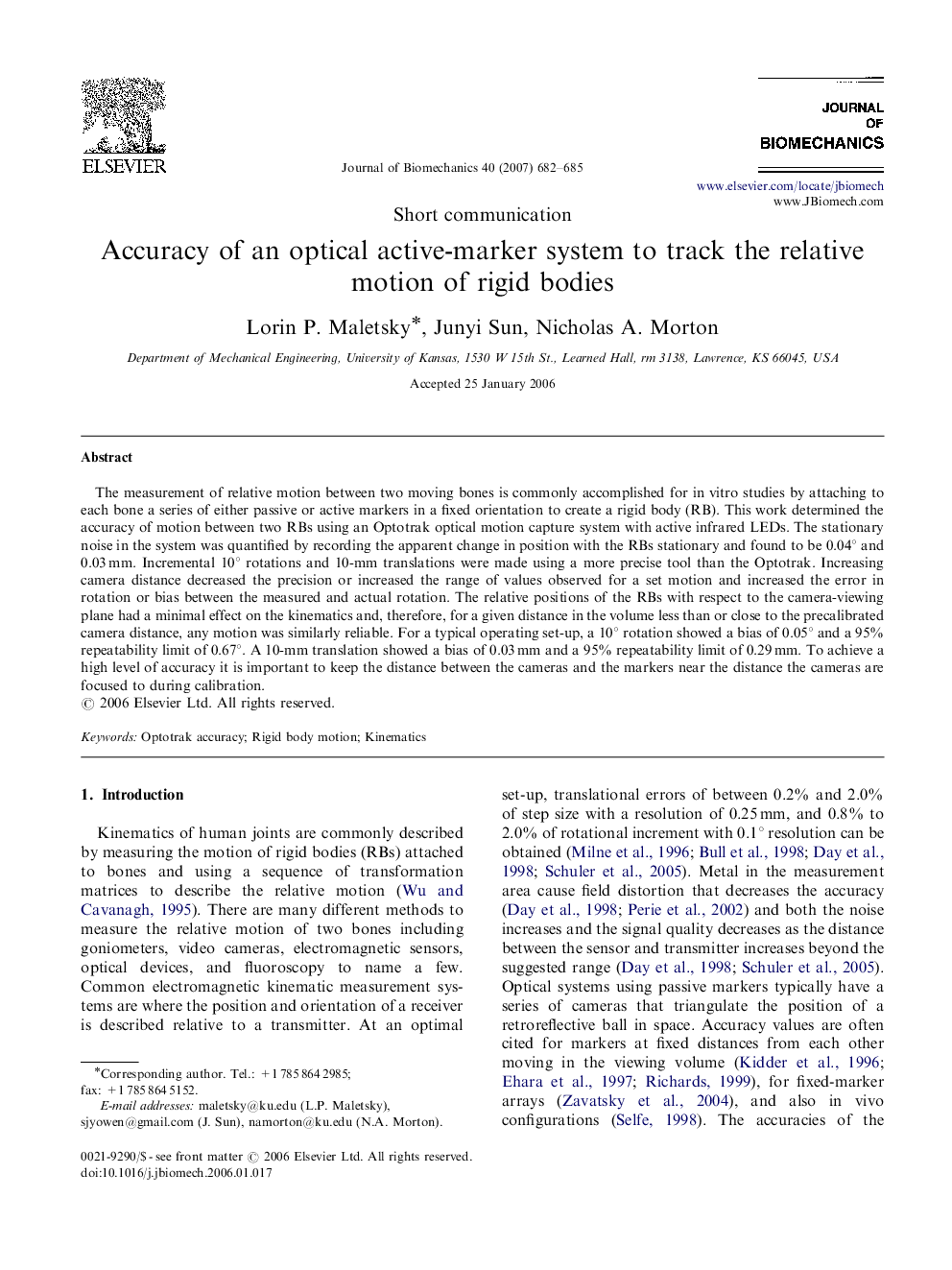| Article ID | Journal | Published Year | Pages | File Type |
|---|---|---|---|---|
| 874674 | Journal of Biomechanics | 2007 | 4 Pages |
The measurement of relative motion between two moving bones is commonly accomplished for in vitro studies by attaching to each bone a series of either passive or active markers in a fixed orientation to create a rigid body (RB). This work determined the accuracy of motion between two RBs using an Optotrak optical motion capture system with active infrared LEDs. The stationary noise in the system was quantified by recording the apparent change in position with the RBs stationary and found to be 0.04° and 0.03 mm. Incremental 10° rotations and 10-mm translations were made using a more precise tool than the Optotrak. Increasing camera distance decreased the precision or increased the range of values observed for a set motion and increased the error in rotation or bias between the measured and actual rotation. The relative positions of the RBs with respect to the camera-viewing plane had a minimal effect on the kinematics and, therefore, for a given distance in the volume less than or close to the precalibrated camera distance, any motion was similarly reliable. For a typical operating set-up, a 10° rotation showed a bias of 0.05° and a 95% repeatability limit of 0.67°. A 10-mm translation showed a bias of 0.03 mm and a 95% repeatability limit of 0.29 mm. To achieve a high level of accuracy it is important to keep the distance between the cameras and the markers near the distance the cameras are focused to during calibration.
